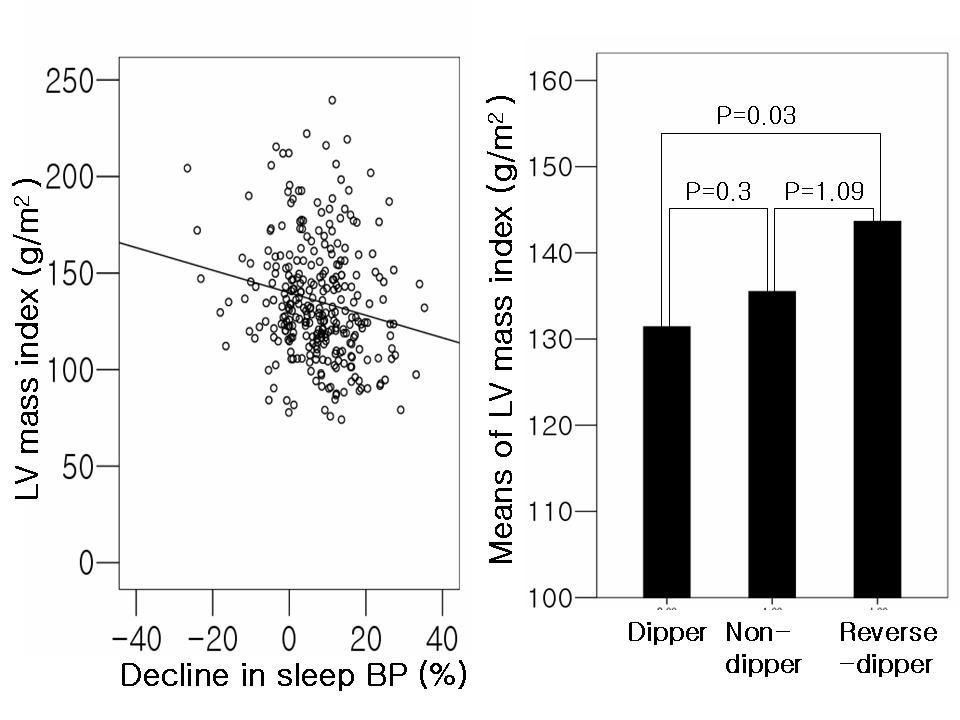| єя«•«ьљƒ : ∆чљЇ≈Ќ
|
ЅҐЉцєш»£ - 550906 232 |
| Reverse Dipper in Ambulatory Blood Pressure Monitoring Is Related to Increased Left Ventricular Mass Index |
| лМАкµђк∞АнЖ®л¶≠лМАнХЩл≥СмЫР |
| мЖРмЮРмШБ, кєАл≥СкЈЬ, , нЩНмКєнСЬ, мЭімШБмИШ, л•ШмЮђкЈЉ, мµЬмІАмЪ©, кєАкЄ∞мЛЭ, мЮ•мД±кµ≠ |
BACKGROUND: To determine the individual effect of abnormalities in blood pressure (BP) circadian rhythm on target organ damage (TOD) and which of these is more closely related to TOD in patient with hypertension. METHODS: The 24-h ambulatory BP monitoring (ABPM) and echocardiography and urinary microalbumin/creatinin ratio were measured in 115 dipper, 118 non-dipper and 60 reverse dipper subjects. RESULTS: Decline in sleep BP (%) is reverse correlation with left ventricular mass index(r=0.18, p<0.01)(left side of figure). The left ventricular mass index was higher in reverse-dipper group (143.6±35.5 vs 131.4±33.3 g/m2, P=0.03) than dipper group(right side of figure). Urine microalbumin/creatinin ratio was no significant difference among three group (0.11±0.22 vs 0.12±0.34 vs 0.09±0.16, p=0.73, dipper vs non-dipper vs reverse dipper respectively). CONCLUSIONS: It may be postulated that increased night BP are the factors that cause left ventricular hypertrophy, and it seems reasonable to attempt to restore normal circadian rhythm of the BP even in patients with hypertension.
|
|
|
Warning: getimagesize(/home/virtual/circulationadmin/renewal/econgress/conference/abstract/img_files/abpcdipper.jpg) [function.getimagesize]: failed to open stream: No such file or directory in /home/virtual/circulationadmin/new/econgress/conference/manage/schedule/view_abstract.php on line 164

|
|





